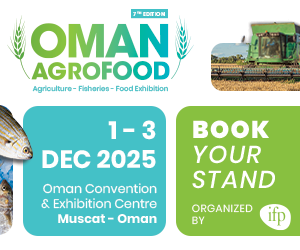The Middle East, despite its vast resources, faces a pressing challenge in ensuring a consistent food supply. The region grapples with arid climates, limited arable land, and a heavy reliance on food imports, which leaves it vulnerable to external shocks and price fluctuations. With scarce rainfall and overburdened aquifers, traditional open-field agriculture has become unsustainable. Furthermore, less than 2% of the Arabian Peninsula is considered arable, highlighting the urgent need for innovative solutions to support food production as populations continue to rise.
Agricultural technology, or Agritech, presents a promising avenue to address these challenges.
What is Agritech?
Agritech refers to the application of technology, such as automation, biotechnology, data analysis, and other innovations, to enhance the efficiency, productivity, and profitability of agricultural practices. Commonly referred to as ag-tech or digital agriculture, this field offers diverse solutions to address the pressing agricultural needs of the Middle East.
Countries like Saudi Arabia and the United Arab Emirates (UAE) are leading the way in embracing technology to secure a sustainable and self-sufficient future. Agritech tools are being utilized to tackle various agricultural hurdles in the region, with water management being a central focus.
Innovative Solutions in Agritech
Controlled Environment Agriculture (CEA) has emerged as a transformative solution for growing crops with minimal water use and reduced space. Through technologies like vertical farming and greenhouse systems, CEA optimizes growing conditions while allowing year-round production. This approach significantly reduces the demand for critical resources like water, an essential factor in the Middle East’s arid climate.
In Saudi Arabia, for example, hydroponic systems are being used to reduce crop growth cycles by up to 50%. The Saudi Agricultural Development Fund is investing heavily in controlled environments and high-tech greenhouses, allocating USD 220 million for the development of vertical farms by 2025. In 2023, the Saudi Public Investment Fund also announced plans to build multiple indoor vertical farms across the region.
Similarly, Dubai boasts the world’s largest vertical farm, a facility designed to reduce water consumption by up to 95% compared to traditional farming methods. The UAE’s efforts to improve agricultural production are further exemplified by the establishment of a multipurpose vertical farm in AgriTech Park, Abu Dhabi.
The Role of Data and AI in Precision Agriculture
Agritech’s potential also lies in the use of artificial intelligence (AI), machine learning, big data, and the Internet of Things (IoT) for precision agriculture. By integrating sensors that monitor moisture, temperature, and nutrient levels, these technologies enable farmers to apply resources more efficiently, reducing waste and optimizing crop growth.
AI-powered tools also allow for predictive modeling and precise crop monitoring, enabling smarter use of fertilizers, pesticides, and other resources. These innovations reduce environmental impact, boost yields, and enhance the resilience of farming systems in the face of unpredictable weather.
Training and Upskilling for Agritech Adoption
While agritech is gaining traction in the Middle East, it’s equally important to invest in upskilling farmers so they can effectively use these emerging technologies. In the UAE, Khalifa University has partnered with Silal, a local agritech firm, to support research and development and to offer training programs for students and farmers alike.
Recognizing the importance of skilled labor, Saudi Arabia’s National Development Fund is promoting investment in the agricultural workforce, ensuring that farmers are equipped with the necessary skills to adopt modern agricultural methods and technologies.
Maximizing Agritech’s Potential through Logistics and Transportation
For agritech innovations to succeed, efficient logistics and transportation networks are essential. While agritech can boost agricultural output, it is equally important to develop reliable infrastructure to transport products from farms to consumers. Investment in modern transportation systems, cold storage facilities, and streamlined distribution networks will help minimize post-harvest losses and ensure the timely delivery of food products.
Integrating agriculture with logistics presents an opportunity for businesses to optimize operations, reduce costs, and improve efficiency. Collaboration with experienced logistics providers and leveraging digital technologies for supply chain management can enhance transparency, traceability, and responsiveness, ultimately contributing to a more sustainable and resilient food system in the region.
Conclusion
The Middle East has a unique opportunity to lead the way in sustainable food production through the integration of agritech and supportive logistics infrastructure. By continuing to invest in cutting-edge technologies and providing farmers with the tools and training to succeed, the region can create a self-sufficient food system that meets the needs of future generations. With a combination of innovation, strategic investment, and a focus on sustainable practices, the Middle East can turn its agricultural challenges into growth opportunities.












































































